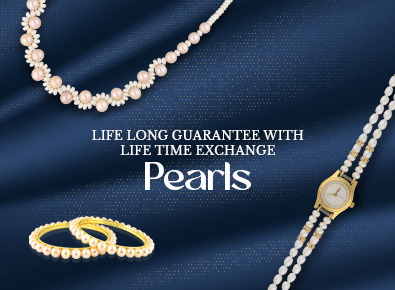It’s been a while since we spoke about freshwater pearls. If you’re a pearl-lover, knowing every little detail about pearls only makes them more fascinating. Everybody knows pearls come from oysters and oysters are usually found in the sea – that begs the question: what are freshwater pearls?
Freshwater pearls, as the name suggests, originate from freshwater bodies such as lakes, ponds and rivers. These stunning pearls come from mussels and not oysters. Freshwater pearls can be both natural and cultured – which is why you should be careful to check your facts before investing in these stones.
Freshwater pearls and seawater pearls are quite different. Apart from the organism these pearls come from, they tend to vary in size, lustre, overtones and shape. Seawater pearls are considered rare and are often perfectly spherical in shape – which in popular opinion makes them superior to freshwater pearls. But freshwater pearls have their own beauty, a shiny outer layer and shapelessness that is beautiful. Because freshwater pearls are more widely available, they are also more affordable.
Most freshwater pearls are not as perfectly circular as is the case seawater pearls. In fact, in China they are called rice pearls because their shape mimics rice grains. And it is this shapelessness of freshwater pearls that people often love.
Sometimes freshwater pearls take the shape of vegetables, animals, faces and other exotic things. For example, there are some pearls that take the shape of a cross and such pearls are sold and bought for huge amounts of money. Mostly, the pearls are of an irregular oval shape commonly called Biwa or the Keshi pearls.
Freshwater pearls are also easier to culture when compared to seawater pearls. This is why there is never a dearth of freshwater pearls in the market. This doesn’t mean they are not precious anymore. Until recently, Japan was the major producer of freshwater cultured pearls. But the lakes eventually got too polluted to be used for this purpose and hence, the country that produces most freshwater pearls is China.
These are all the facts we have for you in this article. Be sure to check back with us in a week or so – as we keep updating our blog. Also, we are having a massive sale on the Rakhi collection on our website – www.www.jpearls.com, you can get 30% by using the code EXTRAJPRK30 at checkout. Take a look at the freshwater pearl rakhis – those are simply gorgeous!











